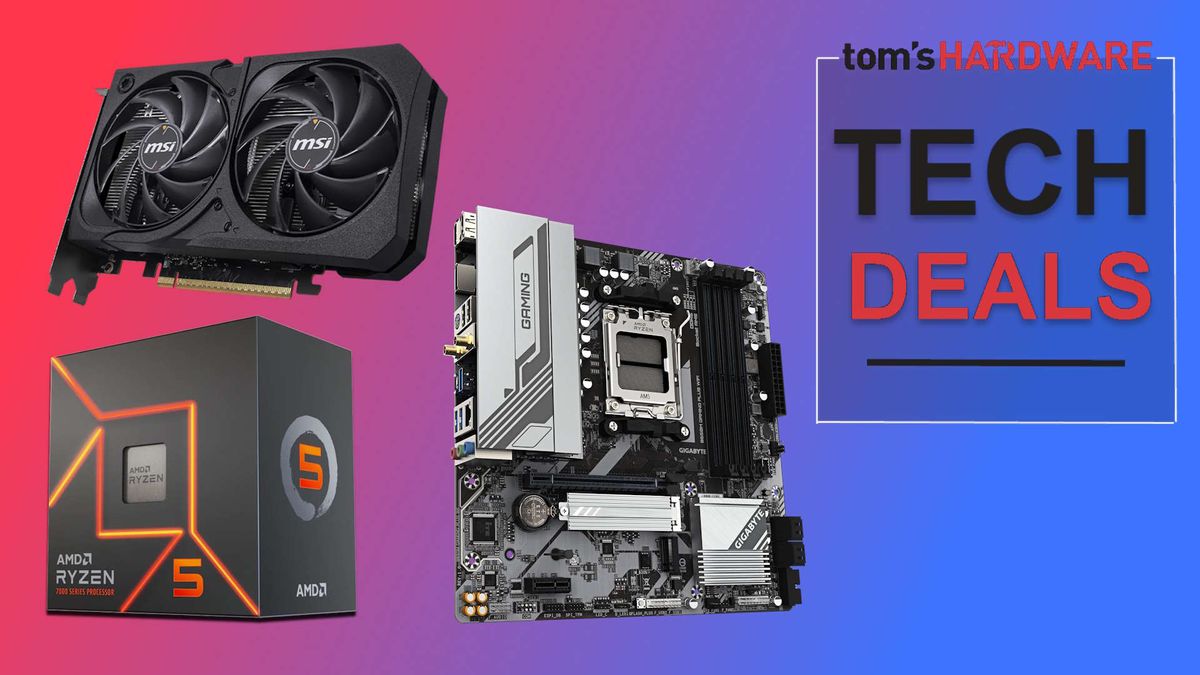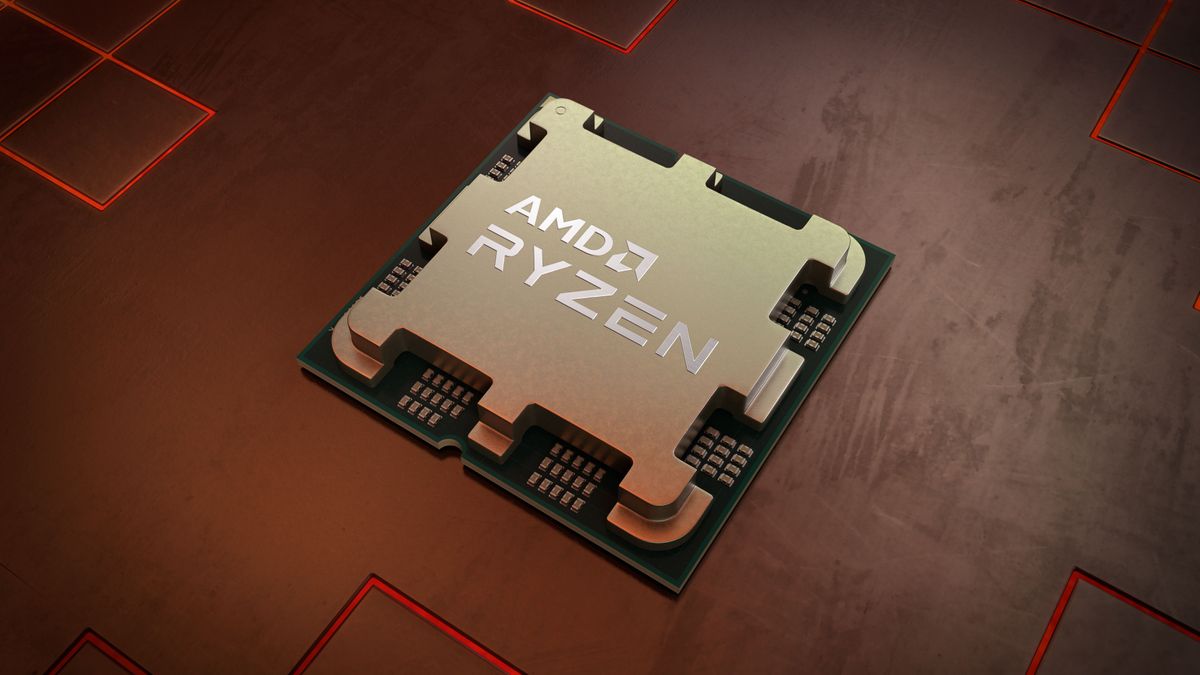I have often discussed what qualities to look for in a gaming monitor. Technologies like Adaptive-Sync, backlight strobing and overdrive are essential, but above them is refresh rate. The 60 Hz offered by enterprise screens won’t cut it today, not even close. When Asus introduced its VG248QE, it raised the bar with a 144 Hz refresh rate. Now, that’s a starting point at best. In fact, I’ll go out on a limb and say that you should consider 240 Hz a minimum speed.
Don’t get me wrong, there are plenty of good gaming monitors that deliver a good gaming experience with 165 or 180 Hz. But at 240, you can expect almost complete elimination of motion blur from LCD monitors and zero blur with OLED panels.
OLED remains my favorite tech for gaming, but it comes with a price premium. A 240 Hz LCD like Gigabyte’s GS27QXA is much easier on the wallet. For around $269 at this writing, you get a 27-inch QHD IPS panel with decent contrast, a 260 Hz overclock, Adaptive-Sync, backlight strobe, a solid overdrive, HDR10 with 400 nits and wide gamut color. Let’s take a look.
Gigabyte GS27QXA Specs
Swipe to scroll horizontally
Panel Type / Backlight | IPS / W-LED, edge array |
Screen Size / Aspect Ratio | 27 inches / 16:9 |
Max Resolution and Refresh Rate | 2560x1440 @ 240 Hz |
| Row 3 - Cell 0 | 260 Hz w/overclock |
| Row 4 - Cell 0 | FreeSync and G-Sync Compatible |
Native Color Depth and Gamut | 10-bit / DCI-P3 |
| Row 6 - Cell 0 | HDR10, DisplayHDR 400 |
Response Time (GTG) | 1ms |
Brightness (mfr) | 350 nits |
Contrast (mfr) | 1,000:1 |
Speakers | None |
Video Inputs | 1x DisplayPort 1.4 |
| Row 12 - Cell 0 | 2x HDMI 2.0 |
Audio | 3.5mm headphone output |
USB | None |
Power Consumption | 16w, brightness @ 200 nits |
Panel Dimensions WxHxD w/base | 24.2 x 17.6 x 6.8 inches (614 x 447 x 172mm) |
Panel Thickness | 2.2 inches (56mm) |
Bezel Width | Top/sides: 0.28 inch (7mm) |
| Row 19 - Cell 0 | Bottom: 0.94 inch (24mm) |
Weight | 16.35 pounds (7.43kg) |
Warranty | 3 years |
The GS27QXA’s IPS panel is a latest generation part with very quick response specified at one millisecond. My real-world tests show it to be a fast panel with almost no blur observed and low input lag. Gigabyte includes a 260 Hz overclock option, but that comes with a caveat, no Adaptive-Sync. Is that a big deal? At 240 Hz and faster, G-Sync and FreeSync aren’t strictly necessary. You might see the occasional frame tea, but when paired with a speedy video card. Frame rates can stay locked at 240-260fps without difficulty. If you opt for AS, it works with Nvidia and AMD PCs and enables a smart overdrive that compensates for changes in refresh rate. The video processing here is of much higher quality than the price suggests.
Image quality is also solid with more than 1,300:1 measured contrast thanks to low black levels and a very bright backlight which delivered over 500 nits for HDR10 content in testing. The color gamut covers around 92% of DCI-P3 so there’s plenty of saturation to make the picture pop. Accuracy is reasonable but calibration makes a significant improvement that’s worth the effort.
The GS27QXA is otherwise a basic gaming display. There are no internal speakers or USB ports. The HDMI inputs are version 2.0 and DisplayPort is 1.4, providing sufficient bandwidth for QHD signals up to 260 Hz with Adaptive-Sync and HDR. There isn’t any zone or field dimming, so you won’t see higher contrast with HDR content. However, the brightness level goes up noticeably, which makes a visible improvement.
Gaming aids include a selection of crosshairs along with Gigabyte’s GameAssist that displays frame rates in real time and a set of timers. The OSD also provides PIP and PBP functions and you can program the control joystick for quick access to commonly used functions.
Not too much has been sacrificed on the altar of value here. The GS27QXA has a minimalist stand, and no LED light show, but it delivers high performance and has everything needed for reliable and fun gaming. And it’s half the price of a similarly equipped OLED which is a great reason to keep reading.
Assembly and Accessories
The GS27QXA comes in the cardboard version of a plain brown wrapper, further showing its high value. Crumbly foam disgorges the contents, which are the panel, and a simple two-piece stand with a small but solid base. Screw the parts together with a captive bolt, snap the panel on and you’re ready to rock. The power supply is internal, a nice touch for a budget monitor, and you get a DisplayPort cable.
Product 360

Starting up front, the GS27QXA is all business with a super slim flush bezel that’s barely noticeable when the power’s on. A wider strip sets off the bottom with a Gigabyte label front and center. Under that is the OSD joystick, the only control. It navigates a well-organized OSD and makes settings changes a breeze.
The stand is most easily seen from the back where you can see its attachment point down low. I’m not a fan of this arrangement because tilting the panel moves the top away from the user, leaving the bottom unchanged. It’s a little more work to set the panel to your eyepoint. And there’s no height adjustment. If you want the GS27QXA to be vertical, you’ll need some sort of pedestal or a low-slung gaming chair. The tilt angles are five degrees forward and 20 degrees back with no swivel or portrait mode. The stand is quite solid and stable and includes a clip for cable management. Should you opt for an aftermarket arm, there are threaded holes in a 100mm VESA pattern. You’ll need to source your own fasteners though.
The input pack is basic with two HDMI 2.0 and a single DisplayPort 1.4. There are no internal speakers, but you can hear audio through the 3.5mm headphone jack. No USB ports are included.
OSD Features
Pressing the GS27QXA’s joystick summons a quick menu which can take you to picture modes, aiming points, input selection or power off. The four directions can be programmed by the user for a variety of different quick access options.

Gaming is up first with all the GS27QXA’s video processing options. Aim Stabilizer is the backlight strobe and can be used instead of Adaptive-Sync. It’s one of the best implementations I’ve seen with no phasing artifacts and only a 10% brightness reduction. At 240 Hz though, you won’t really need it because the smart overdrive is so good. It varies the overshoot with changes in refresh rate and has zero downside, no artifacts, no fuss. Gigabyte has really done a good job with the GS27QXA’s video processing. What of the 260 Hz overclock? We’ll get to that in a moment.
There are seven picture modes, with Standard being the default and best choice. It includes five gamma presets, four fixed color temps, and a user mode with RGB controls. The GS27QXA comes out of the box looking a tad warm so calibration is recommended. With a few tweaks, greater precision can be achieved, and the difference is visible.
The overclock lives in the Display menu for some reason and enables 260 Hz operation. The caveat is that you no longer have access to Adaptive-Sync. This isn’t necessarily a problem because at that speed, if you can maintain 260fps, frame tears aren’t a factor. Since they occur from changes in frame rate, they can be mitigated by keeping speeds constantly maxed. If you have enough video processing power, that’s easily accomplished.
To view two video signals at once, the GS27QXA includes picture-in-picture and picture-by-picture options. You can move the PIP window around the screen and resize if you wish. This is great for security camera setups.
Quick Switch refers to the OSD joystick and its four directions are programmable. I found the defaults of picture modes, inputs and aiming points to be fine for my purposes. The GS27QXA includes a pared down version of Gigabyte’s GameAssist. Here, it includes four crosshairs, timers, alignment marks and a refresh rate indicator. The info window can be moved around the screen using the joystick.
Asus PA329Q Calibration Settings
The GS27QXA’s default Standard picture mode looked a tad warm to me when I set up the monitor, so I went for the user color temp and its single point grayscale controls. A few clicks later, I had the white point exactly at 6500K for the entire brightness range with no visible errors. The color gamut covers just over 92% of DCI-P3, which is fine for SDR and HDR content. An sRGB mode is available if you want to color grade, but it has some blue oversaturation which might be an issue for some users. I’ve included my recommended settings below.
HDR10 signals are supported with an automatic switch. All picture options are grayed out but you get a nice bump in peak brightness to well over 500 nits. There’s no dynamic contrast though so you won’t see a huge difference in picture quality other than the brighter highlight zones.
Swipe to scroll horizontally
Picture Mode | Standard |
Brightness 200 nits | 52 |
Brightness 120 nits | 21 |
Brightness 100 nits | 15 |
Brightness 80 nits | 7 (min. 63) |
Contrast | 50 |
Gamma | 3 |
Color Temp User | Red 95, Green 100, Blue 92 |
Gaming and Hands-on
After spending a few days using the GS27QXA, I found I had almost nothing to complain about. For gaming, there’s definitely no cause for concern. It delivers super smooth motion and no perceptible input lag. I experimented with the overdrive and its fixed settings but found the Smart OD to be the best choice even though I was always locked at 240fps. QHD resolution means the GS27QXA is fairly easy to drive with a wide variety of video cards.
The 260 Hz overclock made little difference. Though I measured 1ms less input lag in tests, this made no change to gaming feel. Losing Adaptive-Sync also had no impact since I could keep the frame rate at 260 easily. I also found no need for Aim Stabilizer. It lowers brightness by 10% and barely changes the level of motion blur which is essentially nonexistent. If you can keep gameplay at a consistent 240fps, you don’t need the extra video processing features. The smart overdrive is among the very best I’ve experienced.
Control response was perceptually instant in circle strafe, 180-degree turns and run-and-gun maneuvers. Competition gamers will want to check out a GS27QXA if they’re looking for a budget 27-inch screen.
The image looked fantastic with rich color and very good contrast. Unless you’re spoiled by OLEDs (my hand is raised) you will have no complaints. The GS27QXA’s contrast of over 1,300:1 is a little higher than the IPS average and among the best in its price class. Playing games before and after calibration showed that a few adjustments are worth making. Try out my values above if you don’t have a meter available.
For the day-to-day, the GS27QXA is a very competent 27-inch monitor. With 109ppi pixel density, there’s no perception of the dot structure at close viewing distances of two to three feet. High brightness means you can see a clear picture in the sunniest room or even in an outdoor tent like you’d use for location video production.
My only nit-pick is the stand. It is not unusual for budget displays to come with a simple stand. The GS27QXA offers only tilt with a low fulcrum so the panel’s top edge moves away from you when adjusting. And with no height capability, you’ll have to angle the screen upwards to meet your eyepoint. I would consider either a pedestal or an aftermarket arm as a solution. I noted the lack of USB ports, speakers and LED lighting but these did not impact my enjoyment.
Takeaway: The GS27QXA is a super competent work monitor and a superb gaming display. Its video processing delivers smooth motion and instant response to control inputs. Play feel is on par with the very best. At $269, it will be hard to beat when gaming is the primary consideration.
MORE: Best Gaming Monitors
MORE: How We Test PC Monitors
MORE: How to Buy a PC Monitor

 8 months ago
101
8 months ago
101







 English (US) ·
English (US) ·